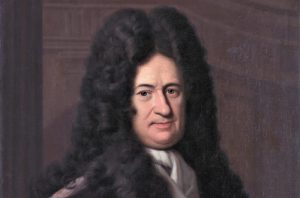Neoplatonism
Neoplatonism is a modern term used to designate the period of Platonic philosophy that begins with Plotinus' work and ends with the closing of the Platonic Academy by Emperor Justinian in A.D. 529. The name Platonism, often described as "mystical" or religious in nature, was developed outside the mainstream of academic Platonism. The origins of Neoplatonism date back to the Hellenistic syncretism era that engendered such movements and schools of thought as Gnosticism and hermetic tradition.
What is Neoplatonism?
It is a set of platonically inspired doctrines and schools that is presented as the last great expression of ancient pagan thought based on the mystical emanation of the material world from a spiritual principle.
About Neoplatonism
The school of thought consists in basing the principle of all that exists as an absolute unity, the One, or the supreme reality, and that from it, all realities by emanation arise. The first being emanating from the One is the Logos, also called Verb, Intelligence, which contains the ideas of possible things. Later, this Intelligence is in charge of engendering the Soul, which implies the principle of movement and matter.
The One, the Intelligence and the Soul are the three hypostases that enclose the whole Neoplatonic Trinity. The being who has been begotten strives to ascend to the perfection from which it emanates. All things come from good, and therefore tend to go toward good. The soul must overcome thought, and when it is confused with God, it loses its own conscience.
History
Neoplatonism originated around the second century, and at that time was taught in various philosophical schools until the sixth century. It is considered the last manifestation of ancient Platonism, and was created with the philosophical doctrines of Pythagoras, Aristotle, Zenon and mainly Plato.
Its first representative was Philo of Alexandria, a Jew who in the first century proposed a Platonic interpretation of the biblical text. Another of his representatives was Ammonius Saccas who in turn is considered the true creator of Neoplatonism, who tried to amalgamate Platonic, Aristotelian, Christian and pagan ideas. However, Neoplatonism reached its greatest splendor with Plotinus, who exposed the doctrine of Neoplatonism in his “Aeneads“.
After the year 400, the doctrine was taught in the Academy of Athens, but ceased to function by order of the Roman Emperor Justinian. It later resurfaced during the Renaissance, a period in which material beauty is combined with spiritual beauty, just like the Baroque period.
Representatives
The main representatives of Neoplatonism were:
- Plotinus: is considered as the founder of Neoplatonism. For him, God was the cause of everything that existed and from him emanated the universal intellect, the soul and the sensitive world.
- Porphyry and Jamblichus: they were disciples of Plotinus and followed his ideas.
- Proclus: was the most systematic of the followers of the doctrine and is the main representative of the phase of philosophical thought. He was also the last great representative of the current, although his disciple Marino continued with his teachings.
- Amono Saccas: he brought the Neo-Platonic doctrine to Rome and founded a school. He is the founder of the Neo-Platonic school.
Characteristics of Neoplatonism
The main characteristics of Neoplatonism are as follows:
- It is a religious current with a mystical tendency of man and divinity.
- They believed that imperfection was in matter.
- They considered that when man’s soul was corrupted, it was imprisoned in the body.
- It was a system of idealistic philosophy and full of spirituality that had a tendency to mysticism.
- It arose during the pagan world of Greece and Rome.
- It was based on Plato’s doctrines.
- They believed that man was made up of body and soul and was therefore similar to God.
- The spirituality of Neoplatonism was used by Christian thinkers to defend the conception of the human soul.
Ethics
As far as the Neoplatonic ethic is concerned, we find that it was marked in an important way by religion and by man’s mystical tendency to be in contact with divinity. Plotinus was in charge of developing an idealistic scheme with platonic bases to influence the Christian asceticism that still persists in some religious groups.
Ethics was based on the one, which was the basis of everything, was total perfection, a principle of divine origin that was unfolded outward in the form of intelligence, then in the form of soul and then as similar souls in body. They also gave special importance to the intellectual life, because this was the purpose of man.
Relationship to Christianity
Post-apostolic Christians believed in Platonism and in the ancient pagan philosophies that Christianity had managed to leave behind. However, Neoplatonism has characteristics that attracted the attention of some intellectual Christians. The Tripartite Model of Divinity of Neoplatonism was perfectly complemented by the Christian doctrine of the Most Holy Trinity. Neoplatonism insisted on the transcendent immaterial kingdom as the supreme good, and also called for ascetic life in Christianity.
Some Christians saw that Neoplatonism contained all the major ideas of Christianity, the only difference being that it did not recognize Christ. The reality, even if Christians denied it, was that the Trinity was platonic in origin, in fact, most of the church priests were platonic. The “unique” being of Platonism became the Hebrew God for Christians. Another of the few differences was that Neoplatonism did not speak of a demon but attributed evil to man’s lack of goodness.
Art
During this period, the artists developed a new more formal language and gave more attention to the themes renovation. They began to create works with profane or mythological themes, trying to reconcile ancient philosophy with Christianity. Art was based on love as the force that moved the universe and beauty, an immaterial associated with God and a material associated with the sensitive world.
Influence
Christian thinkers found in Plato’s spiritualism the perfect weapon to defend and maintain a conception of the human soul, a concept that was rejected by pagan materialism but that the Christian church accepted decisively.
Thus, when Plotinus’ ideas began to stand out, the Christian writers took advantage of the doctrine, since it said that there is a spiritual world more real than the world of matter.
Examples of Neoplatonism
An example of Neoplatonism is as follows:
- A person who believes in Neoplatonism preaches that man’s purpose is to find the freedom of the spiritual soul. He thinks that the soul must be freed from all sensualism in order to arrive clean before God.
- Man becomes a son of God in order to obey him and do only his will of God. Man cannot reach his own destiny by his own twists but needs God’s grace.
How to cite this article?
Briceño V., Gabriela. (2019). Neoplatonism. Recovered on 23 February, 2024, de Euston96: https://www.euston96.com/en/neoplatonism/










